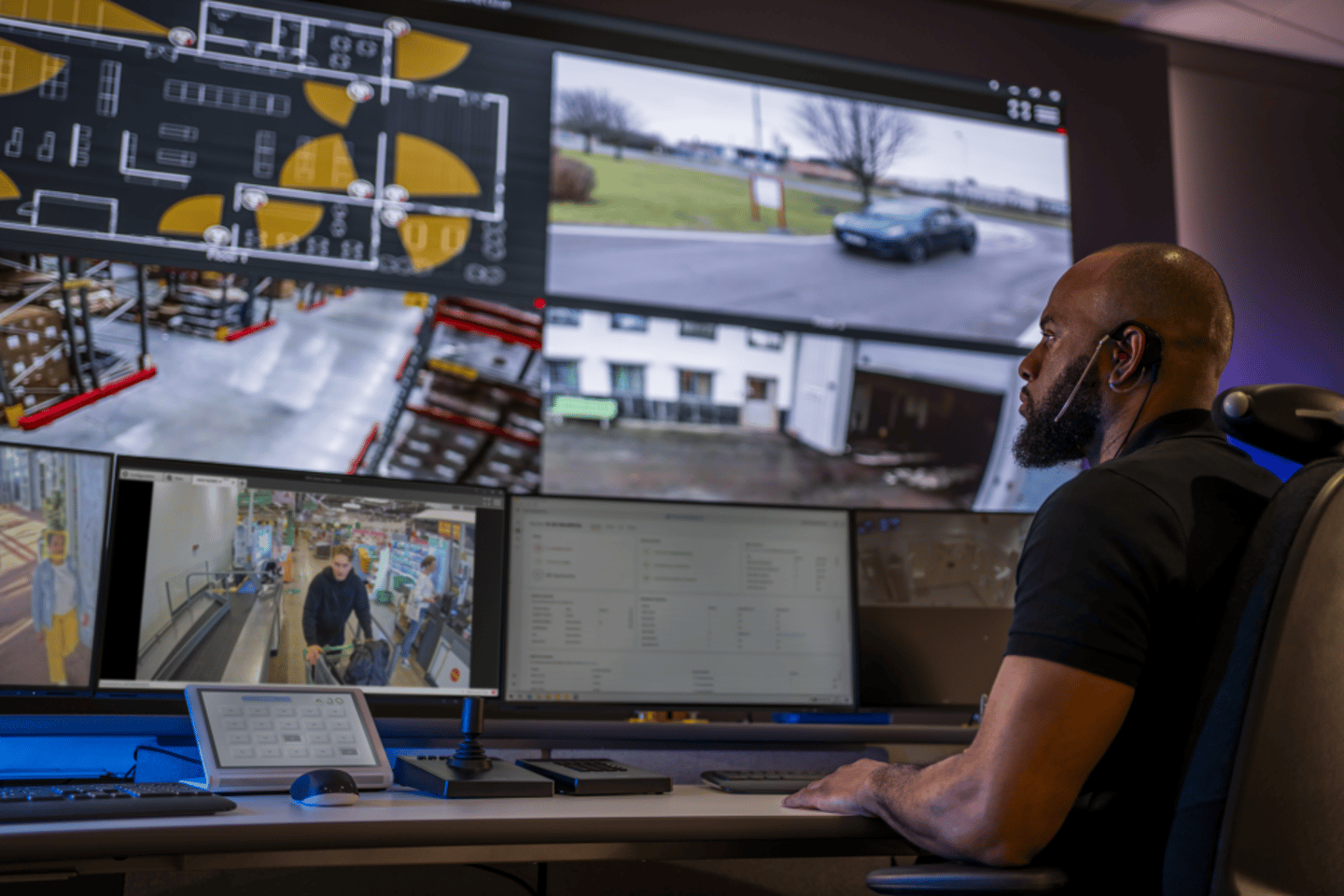Ask the Expert: Enhancing retail security through community collaboration and Technology
In the evolving landscape of Canadian convenience stores and gas station retail, effective crime prevention requires a robust and collaborative approach that transcends individual store boundaries. With the heightened risk of theft, vandalism, and organized crime, these retailers must adopt strategies that engage the wider community, including neighboring businesses, law enforcement, and security services. By leveraging technology and fostering strong partnerships, convenience store and gas station retailers can enhance their security measures and mitigate crime.
The importance of community collaboration
Convenience stores and gas stations, often situated in high-traffic areas, are prime targets for both opportunistic and organized crime. Traditionally, many Canadian retailers have relied on internal security measures, such as CCTV cameras, to deter and manage criminal activity. However, the complexity and scale of modern retail crime demand more comprehensive solutions. The Loss Prevention Research Council (LPRC) highlights the role of community collaboration in retail crime prevention, advocating for a broader network of partnerships involving local businesses and law enforcement.
In Canada, organized crime often spans multiple locations and jurisdictions, requiring businesses to work together to tackle common threats. Retailers can collaborate with each other, as well as with law enforcement agencies, to share intelligence and coordinate efforts. Initiatives similar to the U.S.-based Coalition of Law Enforcement and Retail (C.L.E.A.R.) or the UK’s Pegasus program can inspire similar collaborative models in Canada, fostering closer ties between the private sector and law enforcement in the fight against retail crime.
Leveraging technology for enhanced security
At the heart of effective community collaboration is the ability to share and analyze information in real time. Technology plays a pivotal role in enabling convenience stores and gas stations to integrate their security operations with broader community efforts. Security Operations Centres (SOCs) and Real-Time Crime Centres (RTCCs), which are already prevalent in other regions, offer promising solutions for Canadian retailers to enhance security through technological integration.
Security 0perations centres (SOCs)
SOCs are private security hubs that help retailers monitor threats in real time. For Canadian convenience stores and gas stations, SOCs provide proactive threat detection, incident logging, and forensic analysis. They can monitor security cameras, analyze visual data, and offer real-time situational awareness, helping store owners react quickly to criminal activities. By leveraging the power of SOCs, retailers can not only reduce response times but also store and share critical security information with law enforcement.
Real-time crime centres (RTCCs)
RTCCs, operated by law enforcement, bring a collaborative dimension to retail security by providing a centralized network where surveillance footage from various sources is analyzed in real time. For convenience stores and gas stations, this means that footage from both public and private surveillance systems can be integrated to enhance area-wide visibility. RTCCs use advanced software to identify suspicious behavior and incidents, streamlining the post-incident investigation process.
Integrating SOCs with RTCCs could significantly improve crime prevention efforts in the retail sector. Gas stations and convenience stores, which often operate 24/7, are particularly vulnerable to robberies and vandalism. The combination of private security measures and public crime centers creates a comprehensive system that can detect and respond to threats more efficiently.
Video management systems and data sharing
Video Management Systems (VMS) equipped with forensic search capabilities offer another layer of security for convenience stores and gas stations. With the ability to sift through hours of footage to identify specific incidents, VMS technology can expedite investigations and assist in identifying suspects linked to organized retail crime. When retailers share data through SOCs and RTCCs, the system becomes even more powerful, enabling them to locate individuals or vehicles involved in multiple incidents across different locations.
In the context of Canada’s privacy laws, such as the Personal Information Protection and Electronic Documents Act (PIPEDA), retailers must exercise caution when sharing personal data with external parties. However, exceptions exist that allow information sharing with law enforcement agencies under specific conditions, particularly in cases involving criminal activity. This legal framework enables convenience stores and gas stations to participate in broader crime prevention efforts while maintaining compliance with privacy regulations.
READ: Ask the Expert: How is AI transforming gas station security?
The financial impact of retail crime in Canada
The economic toll of retail crime is significant, with Canadian convenience stores and gas stations facing substantial losses each year. Organized retail crime, including theft of goods, fuel, and equipment, places a heavy burden on retailers. In this context, adopting a collaborative approach can lead to better resource allocation and reduced losses.
According to estimates, retail crime in Canada amounts to billions of dollars in losses annually. This figure underscores the need for Canadian retailers to shift from isolated crime prevention efforts to collaborative, community-driven strategies. By pooling resources and intelligence, retailers can develop more effective loss prevention programs that extend beyond their individual stores.
Building a collaborative future
The future of crime prevention in Canada’s retail sector lies in strategic partnerships between convenience stores, gas stations, law enforcement agencies, and private security organizations. By aggregating data and sharing insights across the community, retailers can develop more informed strategies to address retail crime. This collective intelligence helps identify patterns and repeat offenders, allowing law enforcement and retailers to respond more effectively.
Programs like the Loss Prevention Research Council’s SaferPlaces initiative, which engages a variety of stakeholders including former offenders, could be adapted to the Canadian context. By understanding the motivations behind retail crime and leveraging research insights, Canadian retailers can build safer, more secure environments for their customers and employees.
To wrap up, Canadian convenience stores and gas stations are facing a growing number of security threats, making a collaborative approach to crime prevention vital. Community partnerships, combined with the use of advanced security technologies, give retailers the resources to improve their security and reduce crime risks. By working together, sharing information, and investing in the right technological infrastructure, Canadian retailers can create a safer retail environment.
As retail challenges continue to evolve, store and gas station operators should make collaboration and technological investment central to their crime prevention strategies. The future of retail security in Canada relies on strong partnerships and the strategic use of technology to stay ahead of modern threats.
James Stark is the Segment Development Manager for Retail at Axis Communications. In this capacity, he is responsible for developing strategies and building channel relationships to expand Axis' presence in the Americas retail market.







